Nevill Road, Hove, Nr Brighton, Sussex.
POSTCODE———————————-BN3 7BZ
LOCATED————————————-About two miles north west of Brighton Railway Station and one and a half miles north of Hove Seafront set back off the A2023.
ORIGINAL SITE——————————Market Garden.
DATE CONSTRUCTED——————–1927-28
DATE VENUE OPENED——————-June 1928.
Meaning other sports may have taken place prior to the arrival of Greyhound Racing.
FIRST MEETING—————————–June 2nd 1928, 7,000 attended.
Greyhound Racing only.
LICENSED OR INDEPENDENT———-NGRC.
All venues covered would have to be licensed with the government, licensed suggested in this section would refer to tracks operating under NGRC Rules.
INSIDE OR OUTSIDE HARE TYPE——Outside Swaffham.
Please note that the Electric Hare suggested is only a guidance and would have been in operation for a certain amount of time at this venue. Although it is not necessarily guaranteed that it was operational all the time, as other types of lure may have been used and updated as time progressed.
DISTANCES———————————–515, 695 and 740 metres.
Please note that most racing venues distances had become varied throughout the years, the ones given above were at once point set and offers only a guidance to the track size.
CIRCUMFERENCE—————————Dont know.
Please note that alterations at most racing venues throughout its existence would see that the circumference of the track would vary, the one shown above offers only a guidance to the track size.
BIG RACE NAMES—————————The Regency, The Sussex Cup and The Brighton Belle.
STADIUM SHARED WITH—————–Nothing regular.
LAST MEETING——————————Still in operation.
Greyhound Racing only.
STADIUM CLOSURE DATE—————N/A
Meaning other sports may have taken place after Greyhound Racing had ceased.
STADIUM DEMOLITION——————N/A
BUILT ON SITE——————————N/A
In some cases, structure’s that originally covered the venue after the stadium had been demolished, may have been themselves demolished too, so the one described is more likely to be the one which now presently covers the site.
EVIDENCE LEFT TODAY——————N/A
FURTHER COMMENTS——————-The bronze stature of Ballyreagan Bob is a clear focal point at the stadium, with Bob in full stride close to the winning line.




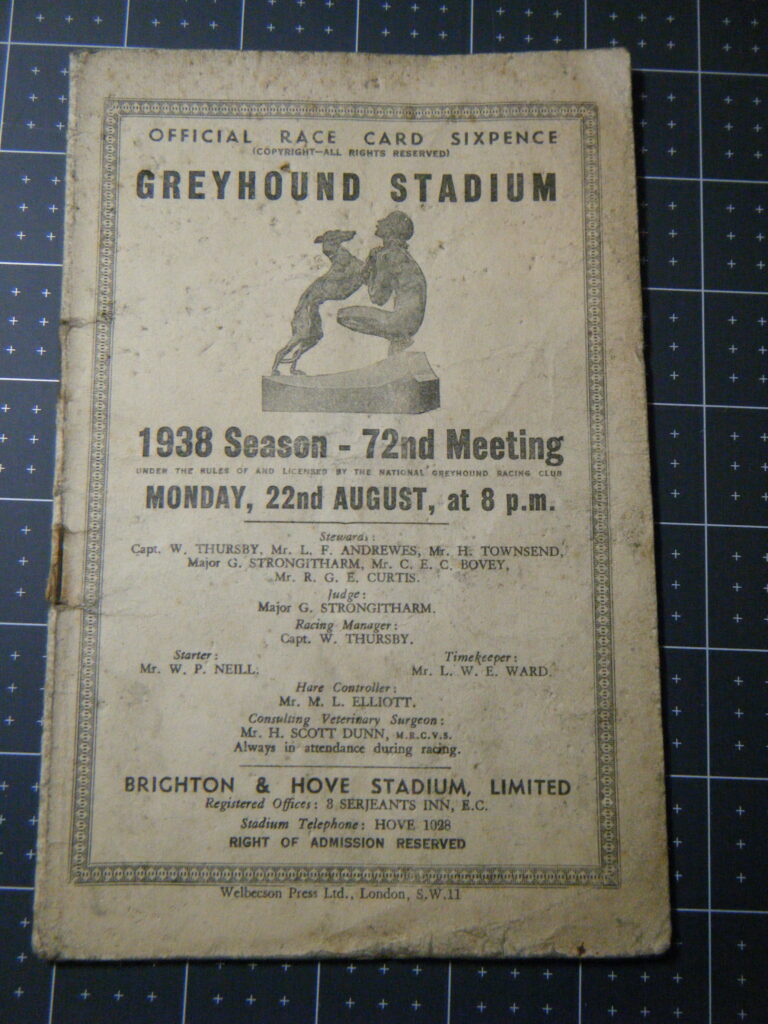
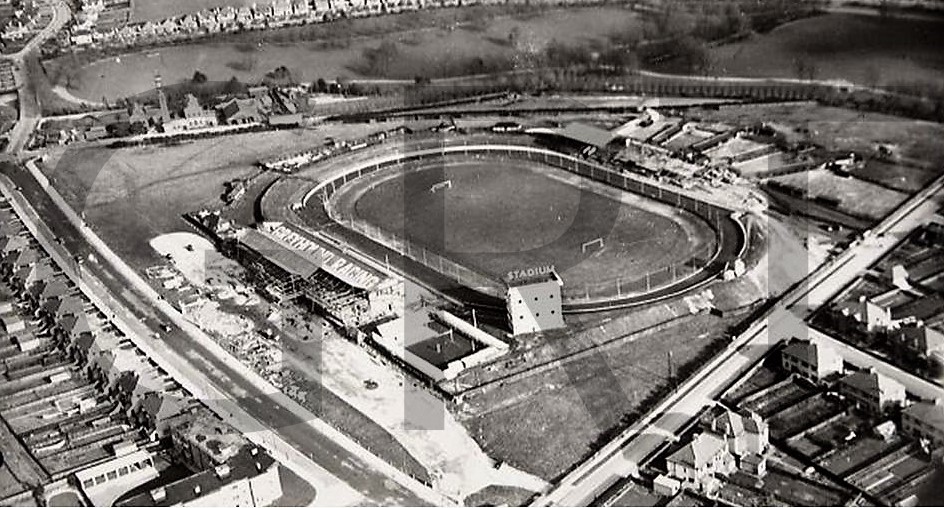

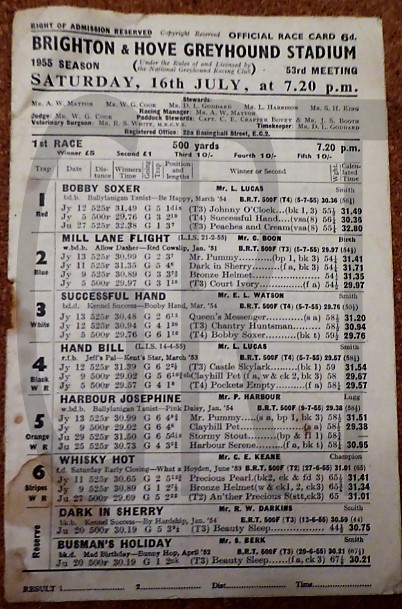













Images provided courtesy of Mr A Hardy.






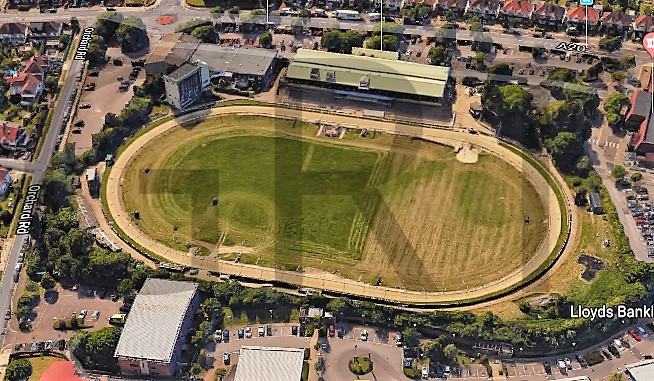

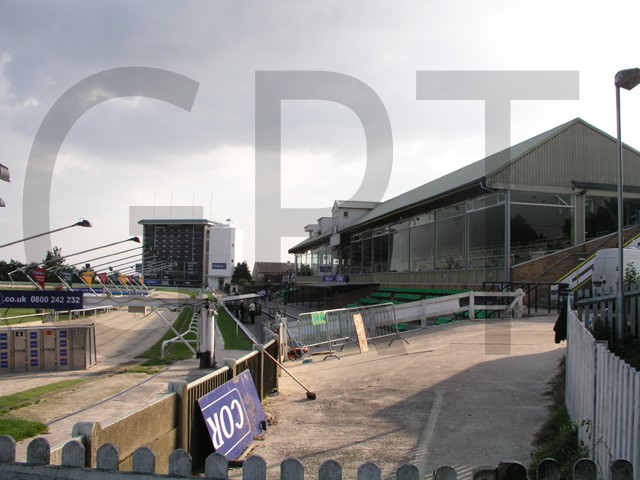


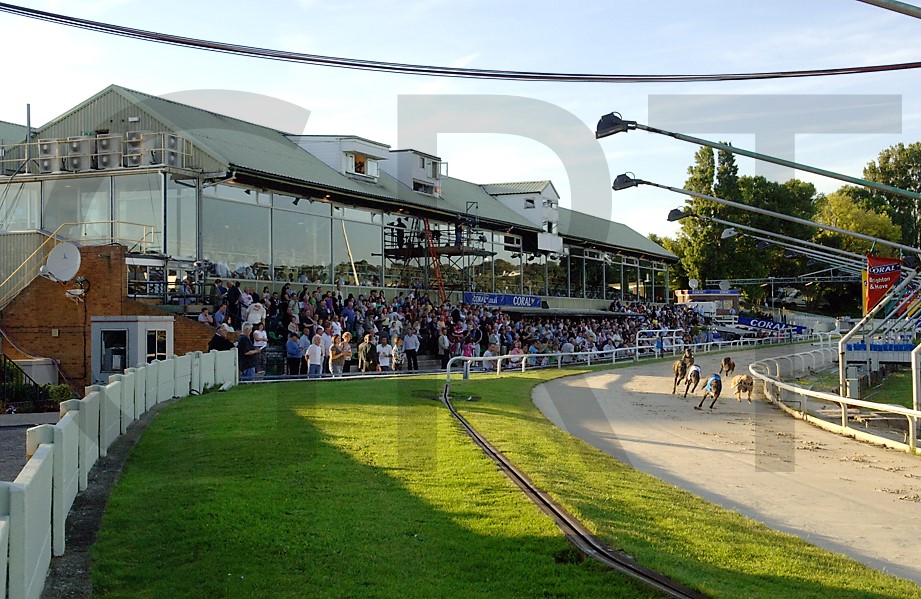
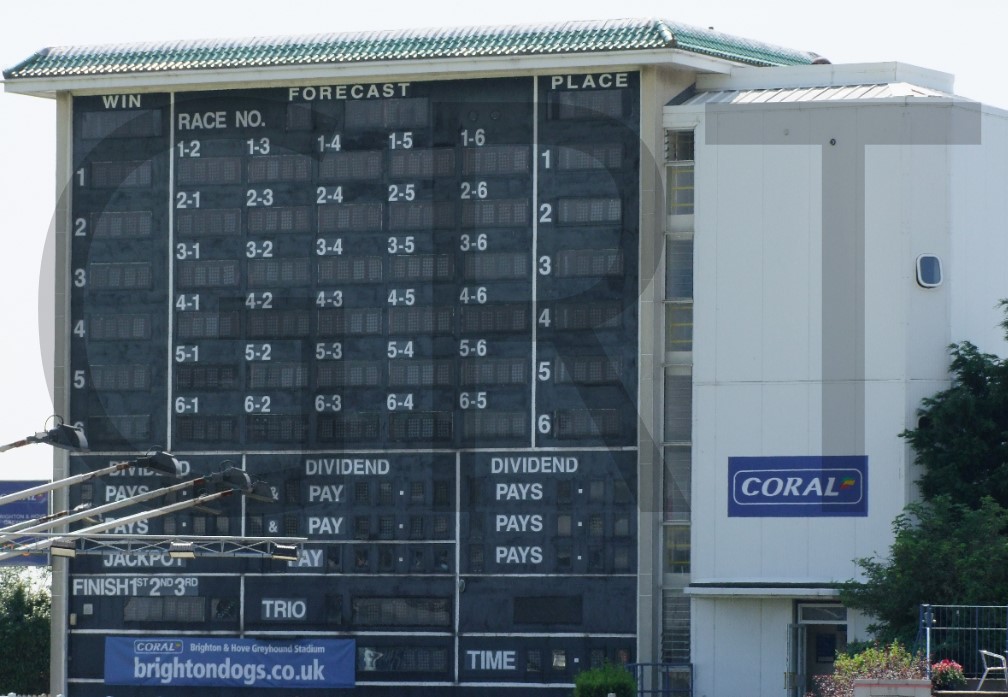
The Brighton and Hove Greyhound Stadium, is actually located in the Sussex town of Hove, one and a half miles north of Hove’s promenade, set back just off the A2023. The stadium had developed on the site of a disused market garden, and had been constructed at a cost of £40,000, with some of its fixtures and materials having been redeemed from The Brighton Aquarium, which had partly been dismantled during 1927.
Hove’s first meeting came on the 2nd of June 1928, with an impressive 7,000 patrons attending, who’s presence witnessed a greyhound called “Costs” win the first event over the 550 yard trip. In May 1932, a hand operated totalisator system was installed, but seven months later it had to be withdrawn from service, due to it being deemed illegal by the government. But in 1934 The Betting And Lotteries Act revised its laws, and tote betting resumed once again across the UK.
Shortly before the outbreak of The Second World War, the track began to invest heavily on upgrading its facilities, firstly seeing the gas powered track side lamps replaced by the more effective electricity powered type during 1938, and also the extension and refurbishment of the main grandstand in 1939. The early days of hostilities had seen Hove continue to stage meetings once the short temporary ban had been lifted, yet the duration of the war had witnessed Hove’s record attendance of 20,000 during an Athletics meeting which involved competitors from The Canadian Army.
Another piece of its history came in 1962 when the Queen attended a school sports gathering, but probably more of a notable piece of sporting history came on the 9th of December 1986, when 8,000 racegoers attended the stadium to witness the great Ballyreagan Bob, trained by George Curtis, notch up his 32nd consecutive win. Even today the legend is still remembered, with a bronze statue of him in full flight directly in front of the judges box.
Nowadays Hove continues to host big race events such as The Sussex Cup, The Regency, The Brighton Belle and The Jimmy Jupp National Hurdle. The stadium’s history shows that other sports featured there also, when during the 1930’s, 40’s and 50’s, visiting football teams to neighbours Brighton and Hove Albion Football Club would train and match prepare themselves on the infield of the greyhound track.
Rugby Union featured also, as sometimes touring sides such as The All Blacks, The Wallabies and The Springboks would also train there. Motor sports were also experimented, with Dirt Track Speedway making just one appearance during June 1928, and also Midget Car Racing which had a brief spell prior to the Second World War. Yet Speedway nor Stock Cars were ever allowed, as noise level tests had failed during trials in 1976 and 1977.
In 1988, the running surface at Hove switched to sand, becoming the last of all NGRC tracks to race on turf. In 1997, the venue almost became a Football League ground venue, after an unsuccessful approach to stage matches there by the homeless Brighton And Hove Albion Football Club, but fortunately the more modern Withdean Stadium near by suited them much better.
Today, Greyhound Racing at Hove operates under NGRC rules, the same as it has done throughout its existence, and is recognised as one of the safest and fastest tracks in the UK. It has a crowd capacity of 2,200, with its main stand consisting of a glass fronted seated restaurant which can easily accommodate over 400 racegoers. It runs six dog races over distances of 515, 695 and 740 metres, with the greyhounds chasing an outside Swaffham type hare on an all sanded surface.
At present the future of Greyhound Racing at The Hove venue remains secure, as it still attracts good crowds, and with no signs of any significant changes in the near future, means that it may be around for quite some time.
Memorabilia for this track is required for this page, if you can help please contact me.

Recent Comments